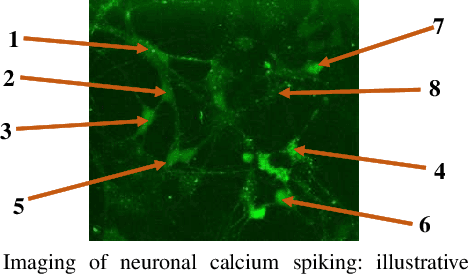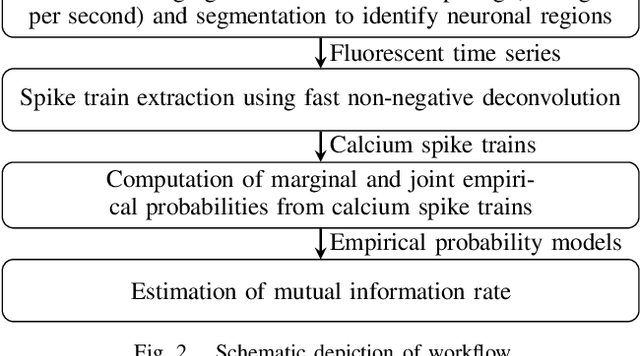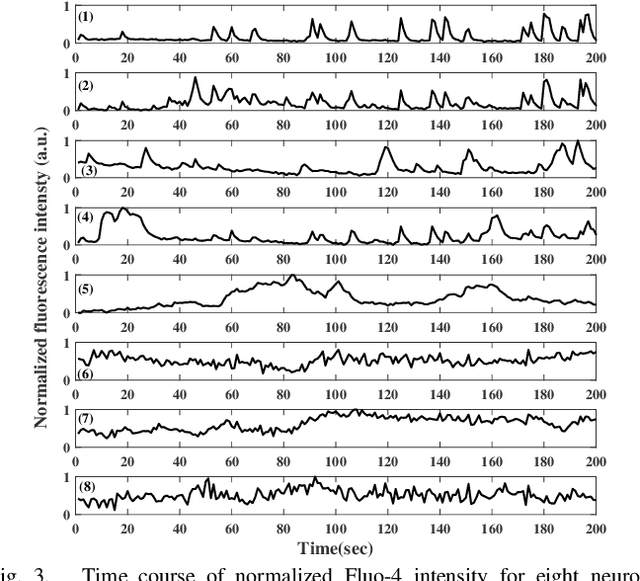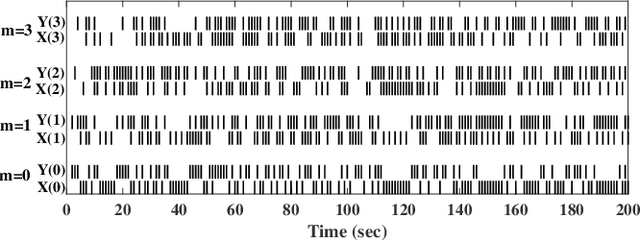Correlation in Neuronal Calcium Spiking: Quantification based on Empirical Mutual Information Rate
Paper and Code
May 07, 2021



Quantification of neuronal correlations in neuron populations helps us to understand neural coding rules. Such quantification could also reveal how neurons encode information in normal and disease conditions like Alzheimer's and Parkinson's. While neurons communicate with each other by transmitting spikes, there would be a change in calcium concentration within the neurons inherently. Accordingly, there would be correlations in calcium spike trains and they could have heterogeneous memory structures. In this context, estimation of mutual information rate in calcium spike trains assumes primary significance. However, such estimation is difficult with available methods which would consider longer blocks for convergence without noticing that neuronal information changes in short time windows. Against this backdrop, we propose a faster method that exploits the memory structures in pair of calcium spike trains to quantify mutual information shared between them. Our method has shown superior performance with example Markov processes as well as experimental spike trains. Such mutual information rate analysis could be used to identify signatures of neuronal behavior in large populations in normal and abnormal conditions.
 Add to Chrome
Add to Chrome Add to Firefox
Add to Firefox Add to Edge
Add to Edge